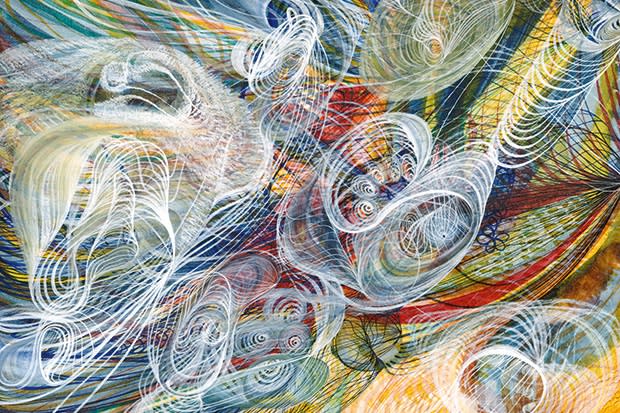
In the art world, the question of who pioneered abstract art is often a topic of debate and fascination. While names like Wassily Kandinsky and Piet Mondrian frequently surface in discussions about the origins of abstract art, there is another figure whose contribution is equally significant yet less known: Georgiana Houghton (1814–84).
The Art Gallery of New South Wales recently showcased Houghton's work in conjunction with the major exhibition "Kandinsky at the Art Gallery of New South Wales." This exhibition, titled "Invisible Friends," featured Houghton's 'spirit drawings' from the 1860s and '70s, positioning her as a radical spiritualist artist and a precursor to abstract art.
Houghton, a prominent figure in the early spiritualist movement in Victorian England, merged her artistic talent with her mediumship. She believed in expressing the connection between the visible world and the invisible spirit realm, considering the 'manifestation first, and art second.' Guided by what she called her 'invisible friends' – including long-dead artists, family, friends, and angels – Houghton created intricate, swirling, mesmeric images. These works, primarily watercolors, are among the most astonishing images of her time.
The rarity and uniqueness of Houghton's work, which only came to light recently in art history, have now assured her place as one of the most radical of spiritualist artists. Her approach to art was not just about creating visually appealing images but about channeling and manifesting spiritual energies and messages. This methodology was groundbreaking for her time and laid the groundwork for what we now recognize as abstract art.
The exhibition at the Art Gallery of New South Wales presented Houghton's watercolors, rarely seen outside their home in the chapel of the Victorian Spiritualists’ Union, Melbourne. Displaying her work alongside Vasily Kandinsky's (1866–1944) highlighted the significant role spiritualism played in the development of early modernism.
So, was Georgiana Houghton the first true abstract artist? While it's challenging to pinpoint a single 'first' in the evolution of abstract art, Houghton's contributions are undeniably pioneering. Her work predates the more commonly recognized abstract works of the early 20th century, offering a unique blend of spiritualism and artistic innovation. Her rediscovery and the subsequent appreciation of her art challenge the traditional narratives of art history and open up new conversations about the origins and evolution of abstract art.
